The Pekoe Trail is a relatively new hiking route spanning an impressive 300 kilometers through Sri Lanka’s Central Highlands. The meticulously designed 22-stage long-distance trails offers a unique way to experience Sri Lanka’s natural beauty and rich cultural heritage, particularly its tea industry.
The hikes in the hill country are incredibly verdant and tranquil, offering a delightful and soothing experience as sunlight filters through the foliage and banana leaves. Picture an adventure with fabulous views, the kindness of strangers, smiling faces and a “good morning” ringing out across the tea plantations.
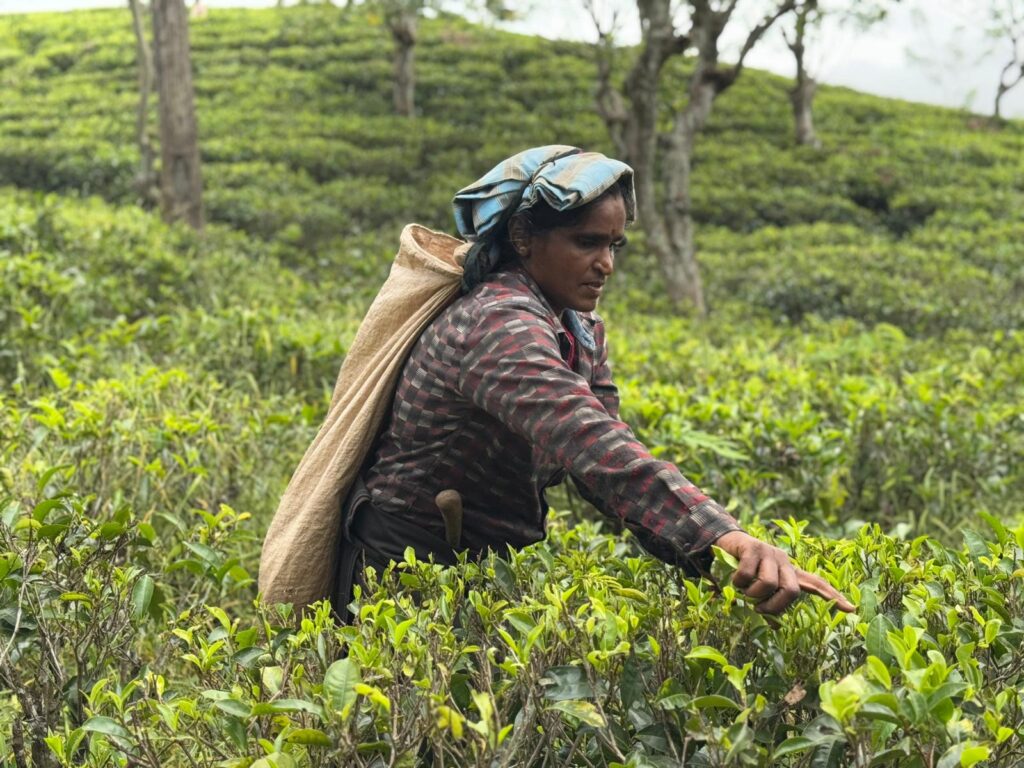
The trail gets its name from pekoe, a type of tea made from the young leaves of the tea plant. Tea has a deep-rooted history in Sri Lanka, and as you walk along the trail, you’ll pass through beautiful plantations where tea is cultivated, picked, and processed. Besides the tea estates, the trail also treats you to stunning views of the mountains like Adam’s Peak, valleys, rural villages, waterfalls scattered throughout the central highlands of Sri Lanka, and the stunning views of Horton Plains National Park.
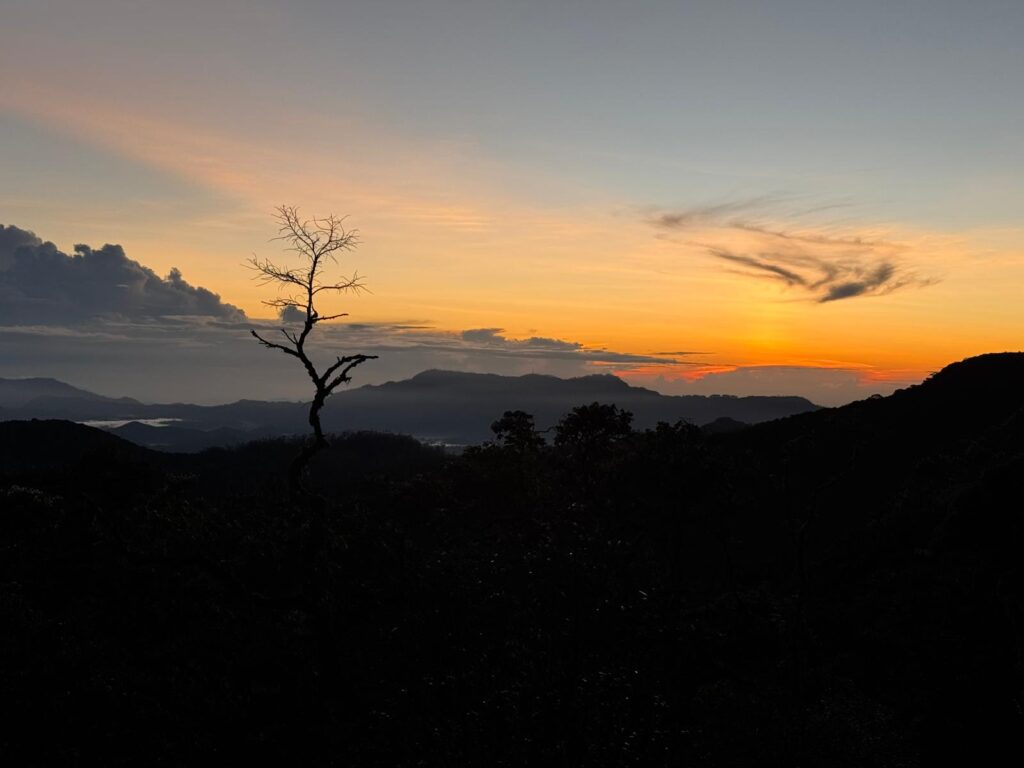
Starting in the sacred city of Kandy, the trail winds its way to Nuwara Eliya, passing through charming towns like Haputale, Hatton, and Ella along the way. As the first of its kind, the Pekoe Trail offers an amazing trekking experience that takes your exploration of Sri Lanka to the next level. You can easily integrate a stage or two, or even a section of a stage into your Sri Lanka itinerary. Without further ado, let’s get into the details of our hiking guide to Pekoe Trail Sri Lanka.
Pekoe Trail Sri Lanka Hiking Guide
- Why the Pekoe Trail is One of the Best Hikes in Sri Lanka
- Overview of the Pekoe Trail Sri Lanka
- Best Time to Hike the Pekoe Trail
- Hiking Difficulty & Preparation for the Pekoe Trail
- Accommodation & Logistics along the Pekoe Trail
- Cultural & Wildlife Encounters
- Safety & Responsible Travel Tips for Hiking the Pekoe Trail Sri Lanka
- Final Thoughts on Hiking the Pekoe Trail
Why the Pekoe Trail is One of the Best Hikes in Sri Lanka
The Pekoe Trail Sri Lanka offers more than just a hike—it’s a journey through the country’s rich history, landscapes, and culture offering great way to see the country off the beaten track and integrating with local people. Whether you’re a seasoned trekker or a casual adventurer, this trail promises:
- Diverse scenery: Tea plantations, waterfalls, forests, and mountains.
- Cultural immersion: Stay with locals, taste authentic food, and learn about Sri Lanka’s tea industry.
- Wildlife encounters: From endemic birds to rare primates.
- A chance to disconnect: Discover off-the-beaten-path trails with fewer crowds.
- Spectacular views: Enjoy panoramic views of Adam’s Peak hike, waterfalls like Gartmore Falls, and Horton Plains National Park trek.
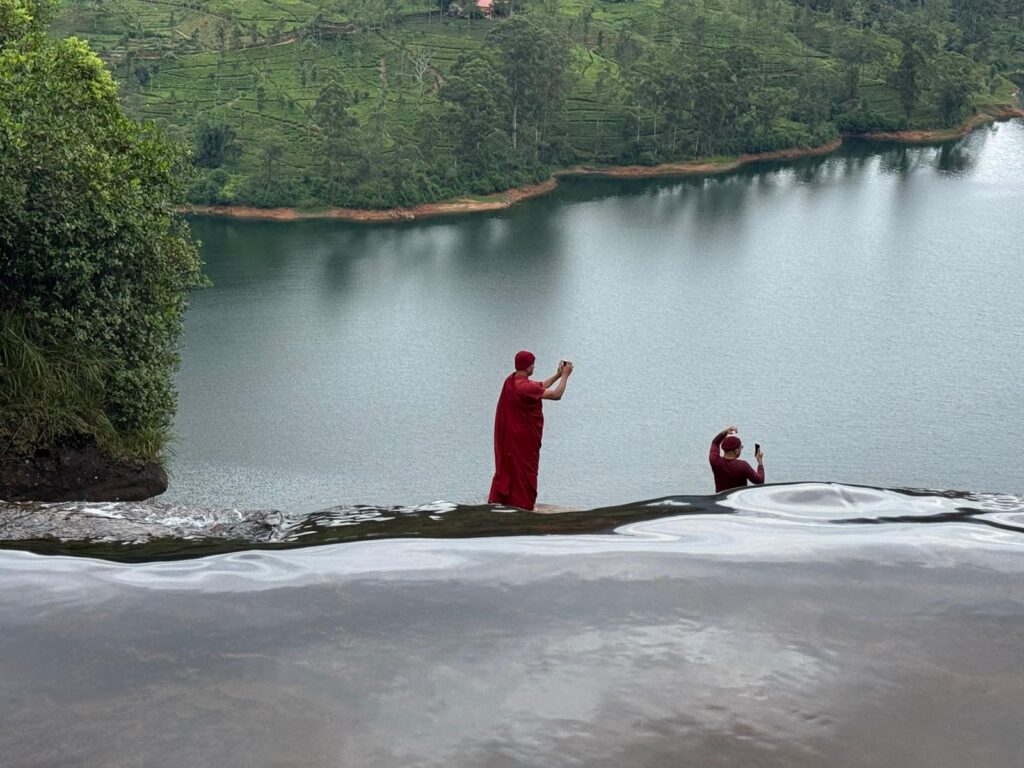
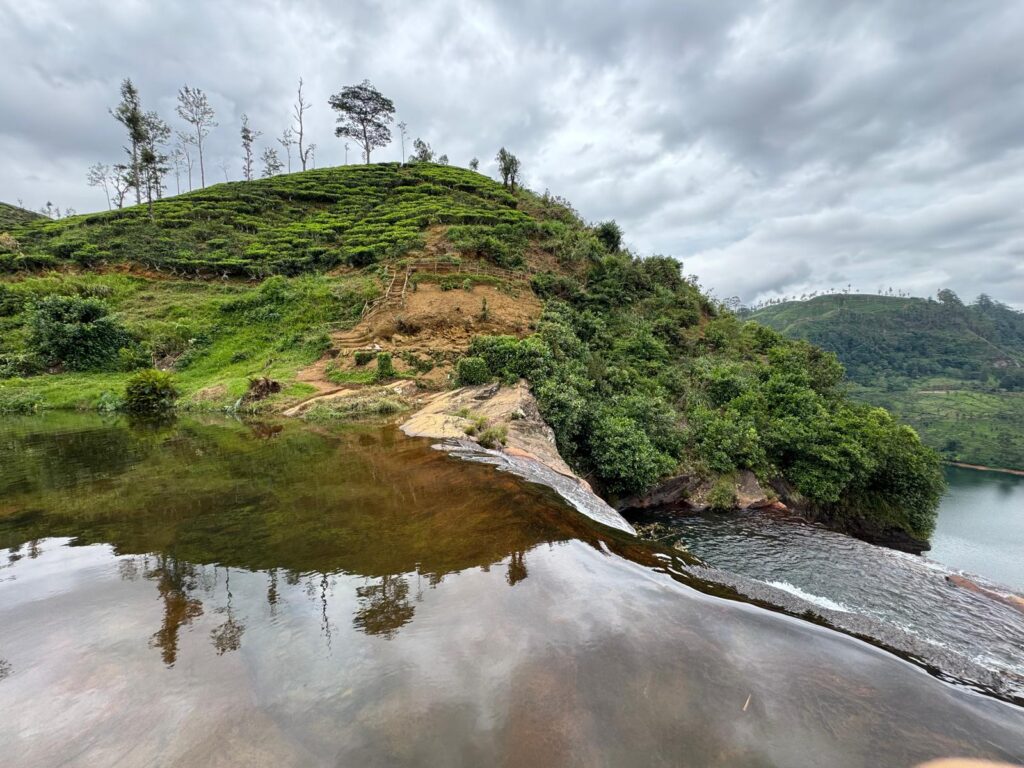

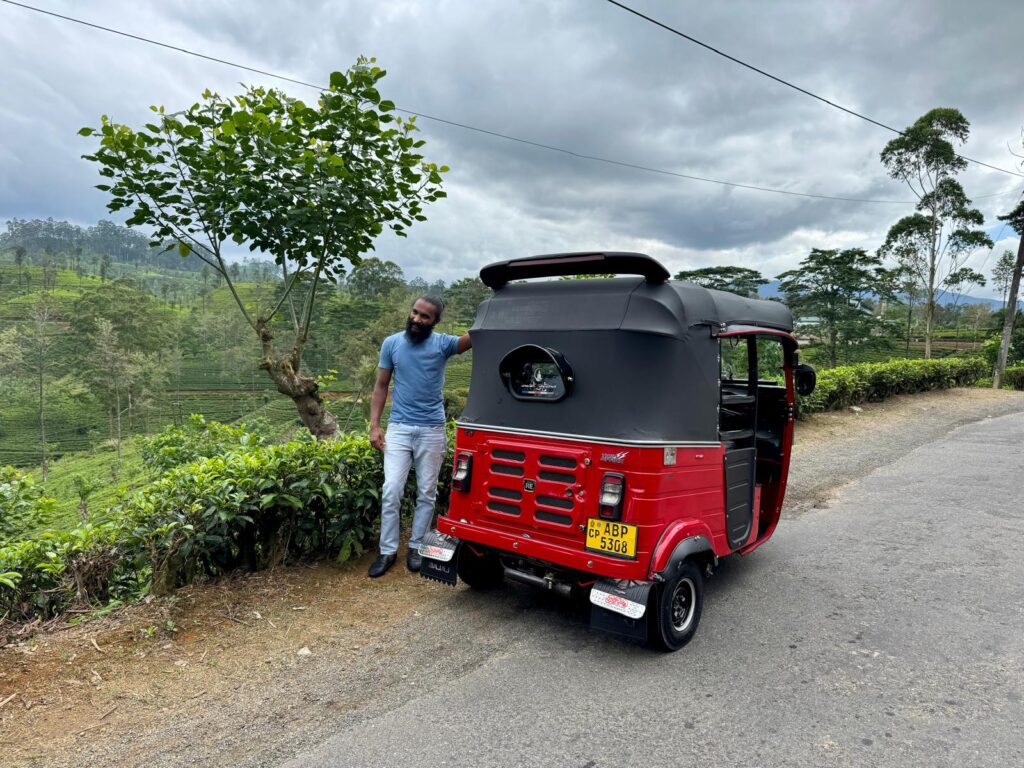
- An alternative to typical Sri Lanka tourism: Experience Sri Lanka hiking trails beyond the popular beach destinations.
- Horton Plains National Park: Some sections of the trail pass through this UNESCO-listed park, famous for its stunning World’s End viewpoint and biodiversity.
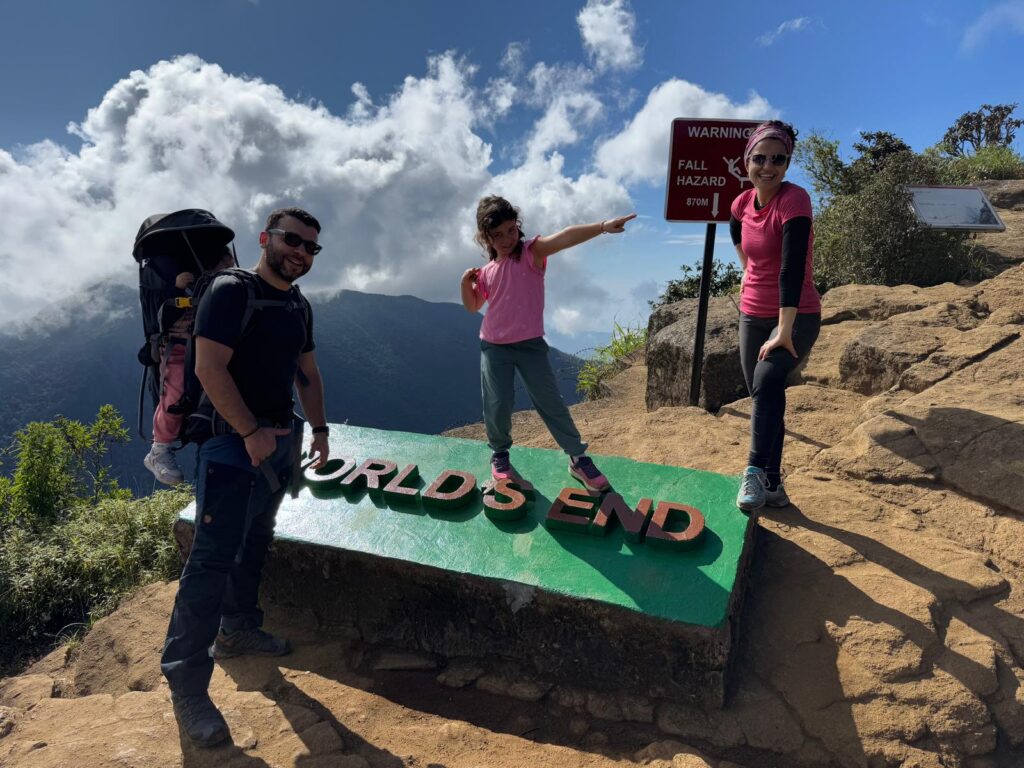


- Adam’s Peak (Sri Pada): The trail also passes near this sacred mountain, known for its spiritual significance and the pilgrimage route to the summit.
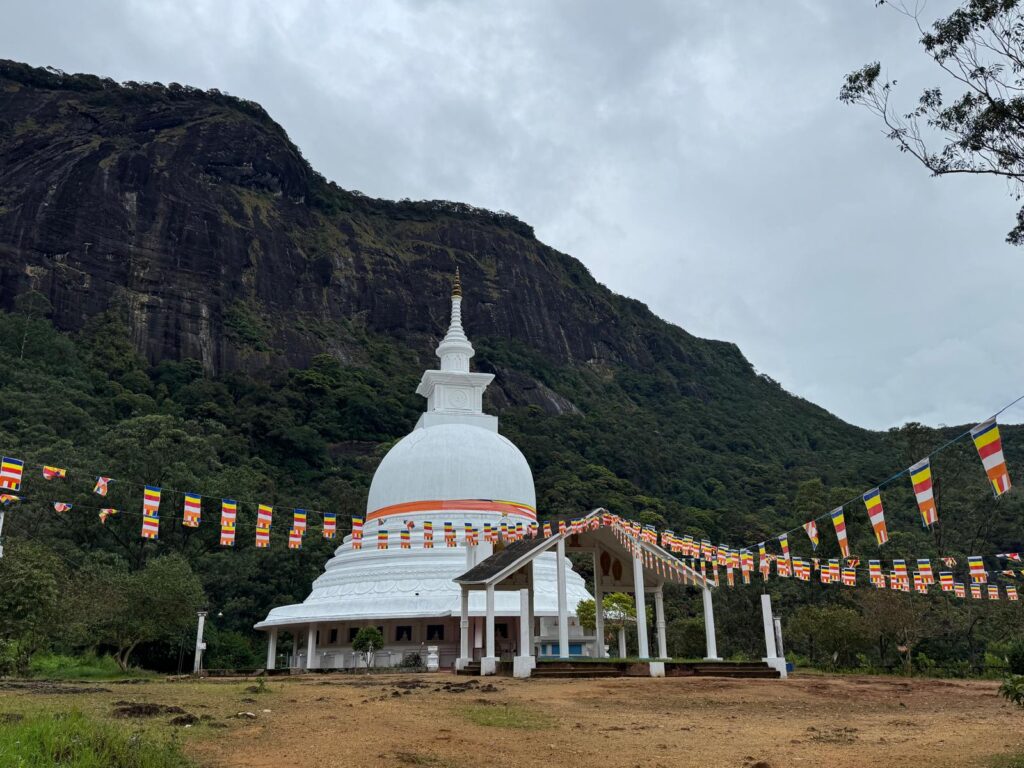
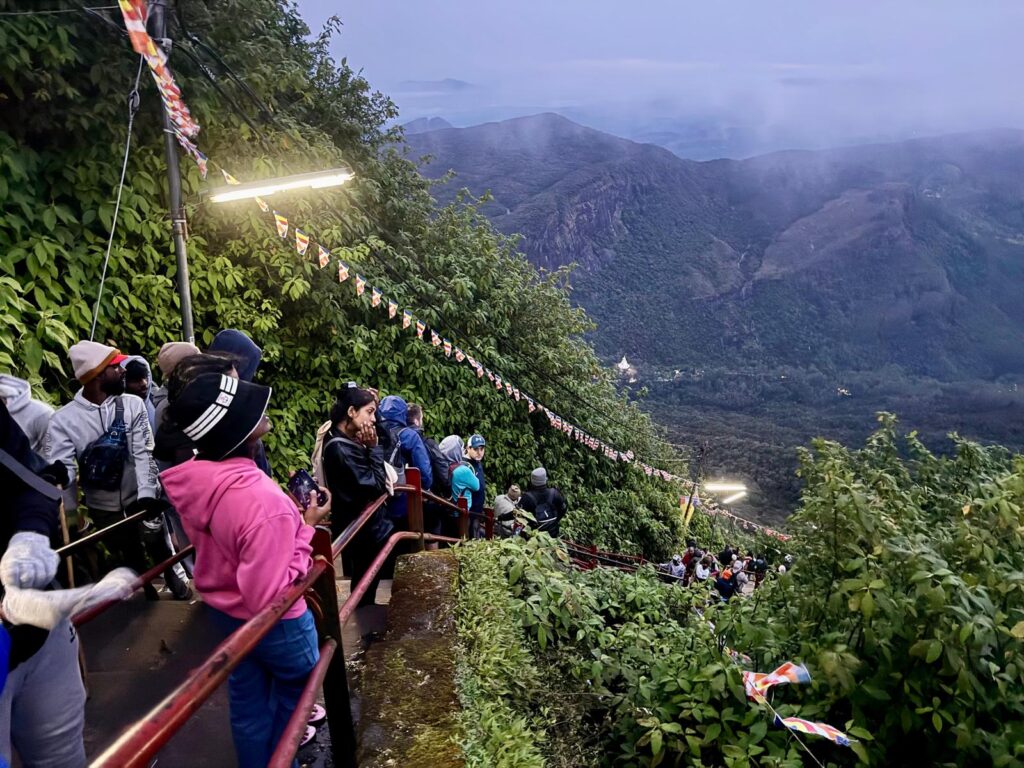
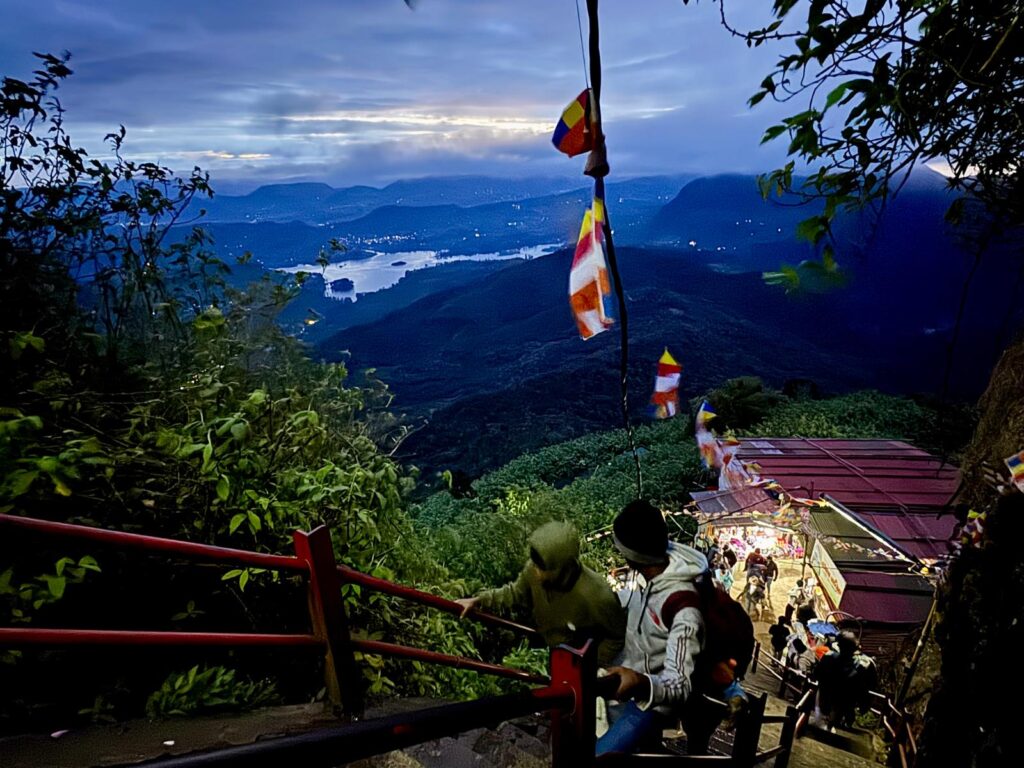
The Pekoe Trail route is ideal for anyone wanting to explore the best hikes in Sri Lanka while enjoying the charm of the Central Highlands Sri Lanka. Whether you hike a single stage or the entire trail, you’ll leave with unforgettable memories of tea plantation trekking Sri Lanka and feel like pioneers.
Overview of the Pekoe Trail Sri Lanka
The Pekoe Trail spans approximately 300 kilometers over 22 stages. While the entirety of the trail could be completed between 10-15 days, you could simply opt for some stages only. The stages vary in length and difficulty, from 9 km to 18 km, meaning that there is something for hikers of any fitness level. Here is the complete list of stages:
- Stage 1: Hanthana to Galaha: Distance – 12.8 km
- Stage 2: Galaha to Loolkandura: Distance – 14.7 km
- Stage 3: Loolkandura to Thawalanthenna – 18.1 km
- Stage 4: Thawalanthenna to Pundaluoya – 14.1km
- Stage 5: Pundaluoya to Watagoda – 14.1 km
- Stage 6: Watagoda to Kotagala – 15.3km
- Stage 7: Kotagala to Norwood – 16.2km
- Stage 8: Norwood to Bogawanthalawa – 15.8km
- Stage 9: Bogawanthalawa to Dayagama – 16.5km
- Stage 10: Dayagama to Horton Plains – 14.9km
- Stage 11: Horton Plains to Udaweriya – 13.1km
- Stage 12: Udaweriya to Haputale – 14.8 km
- Stage 13: Haputale to St. Catherine – 13.5km
- Stage 14: St Catherine to Makulella – 9.4km
- Stage 15: Makulella to Ella – 9.5km
- Stage 16: Ella to Demodara – 8.8km
- Stage 17: Demodara to Haliela – 12.9km
- Stage 18: Haliela to Etampitiya – 13.9km
- Stage 19: Etampitiya to Lunuwatta – 18.4km
- Stage 20: Lunuwatta to Udupussellawa – 12.5km
- Stage 21: Udupussellawa to Kandapola – 16.7km
- Stage 22: Kandapola to Pedro Estate – 10.8km
Pekoe Trail’s Most Beautiful Stages and Route Highlights
- Hanthana to Galaha (Stage 1): A scenic start through lush tea plantations, easy access from Kandy.
- Horton Plains trek (Stage 10): A UNESCO-listed park with diverse wildlife and the famous World’s End viewpoint.
- Bogawanthalawa to Dayagama (Stage 9): A stunning stretch with rolling hills and tea estates.
- Adam’s Peak (Stage 8): A sacred pilgrimage route near the Pekoe Trail Sri Lanka.
- Haputale to Ohiya (Stage 13): Offers views of the misty Lipton’s Seat viewpoint, named after Sir Thomas Lipton.
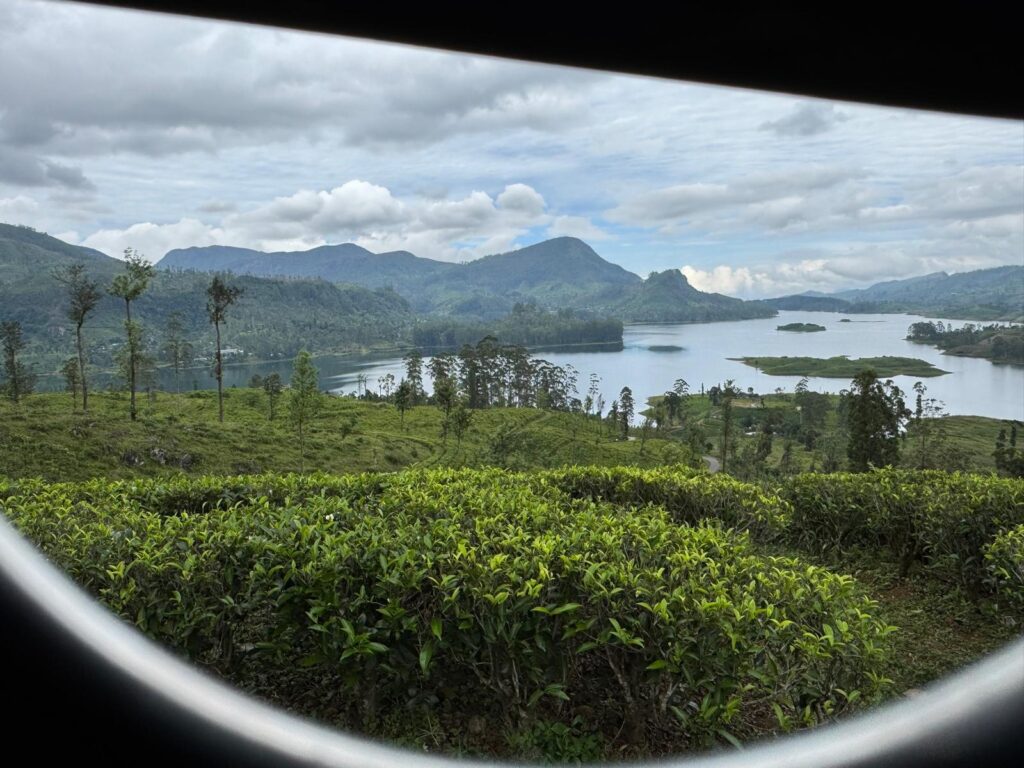
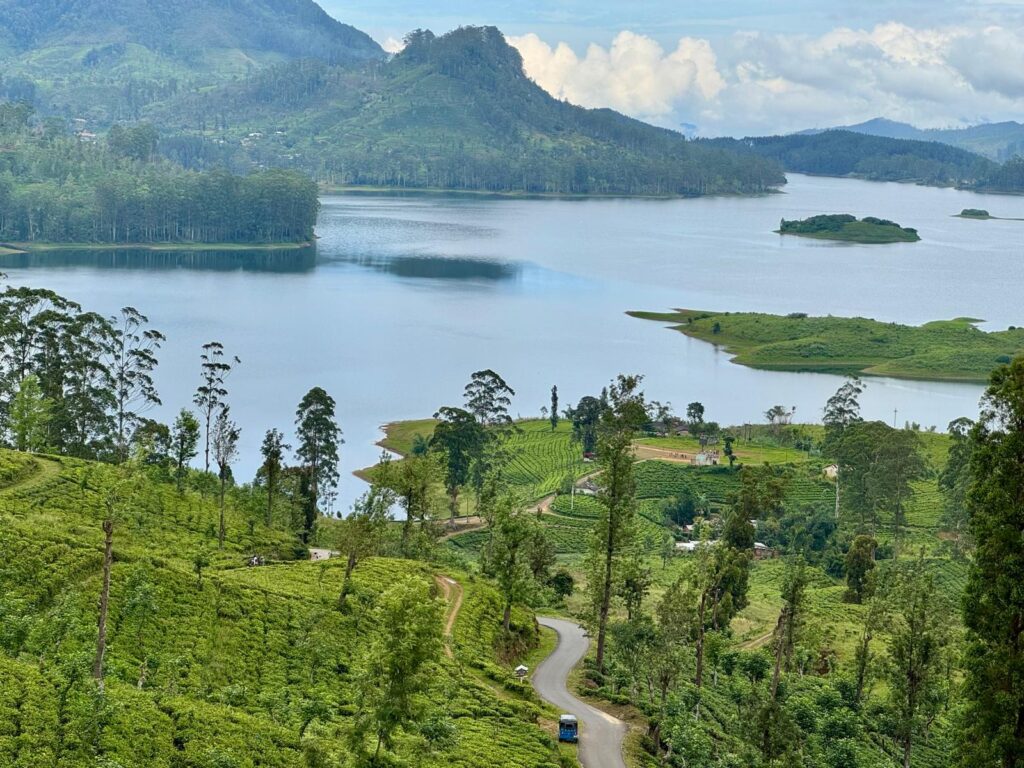
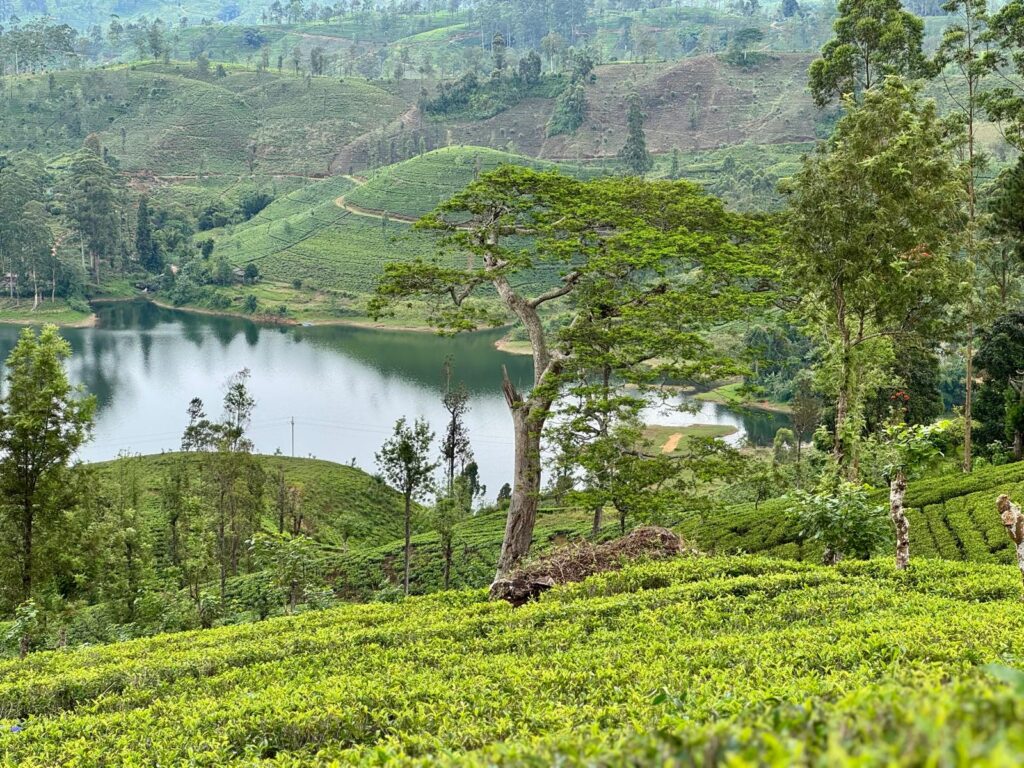
Pekoe Trail Route Breakdown into Smaller Sections
The Pekoe Trail is generally divided into two to three segments, allowing hikers to pace themselves comfortably over two or three days for each section. Here’s a breakdown of the key sections:
- Hatton to Dalhousie (Section 1): The journey begins in Hatton, a small town surrounded by tea estates. From here, the trail meanders through dense tea plantations, offering stunning views of the landscape. This first section is relatively flat but gradually becomes more undulating as you move through the estates. Dalhousie, located in a serene valley, is the first major stop, where hikers can rest for the night. In Dalhousie, visitors can also explore the famous Sri Pada (Adam’s Peak), a popular pilgrimage site located nearby. The small town of Nallathanniya (also called Dalhousie) is located right at the base of Adam’s Peak and has a handful of guesthouses for pilgrims and travelers. If they are full, there are also places to stay around the nearby Maskeliya reservoir. You can take a bus to Maskeliya from Hatton bus stand, which is a five-minute walk from the railway station. From Maskeliya, there are minibuses that circle the reservoir and stop in Dalhousie.
- Dalhousie to Nuwara Eliya (Section 2): This section takes you deeper into the tea plantations and through dense forest paths, providing a contrast to the open views of the previous one. The trail leads toward Nuwara Eliya, a charming hill station known for its colonial architecture, cool climate, and lush gardens. Along the way, you’ll pass streams and waterfalls, with plenty of opportunities to stop and take photos. Nuwara Eliya is a great place to rest, as it offers a variety of accommodation options. One of the highlights of this section is Horton Plains National Park, which the trail passes through. This UNESCO-listed park is home to diverse flora and fauna and offers stunning views of World’s End, a dramatic cliff drop that provides an incredible panoramic view of the surrounding mountains and valleys.
- Nuwara Eliya to Kandy (Section 3): The final stretch of the trail offers the most dramatic change in scenery. Here, the path descends through a mix of forests and agricultural land, leading to Kandy, the final destination. This section of the trail is a mix of descending and flat terrain, offering more diverse landscapes and some beautiful viewpoints.
The trail can be done in reverse too (Kandy to Nuwara Eliya /Hatton).
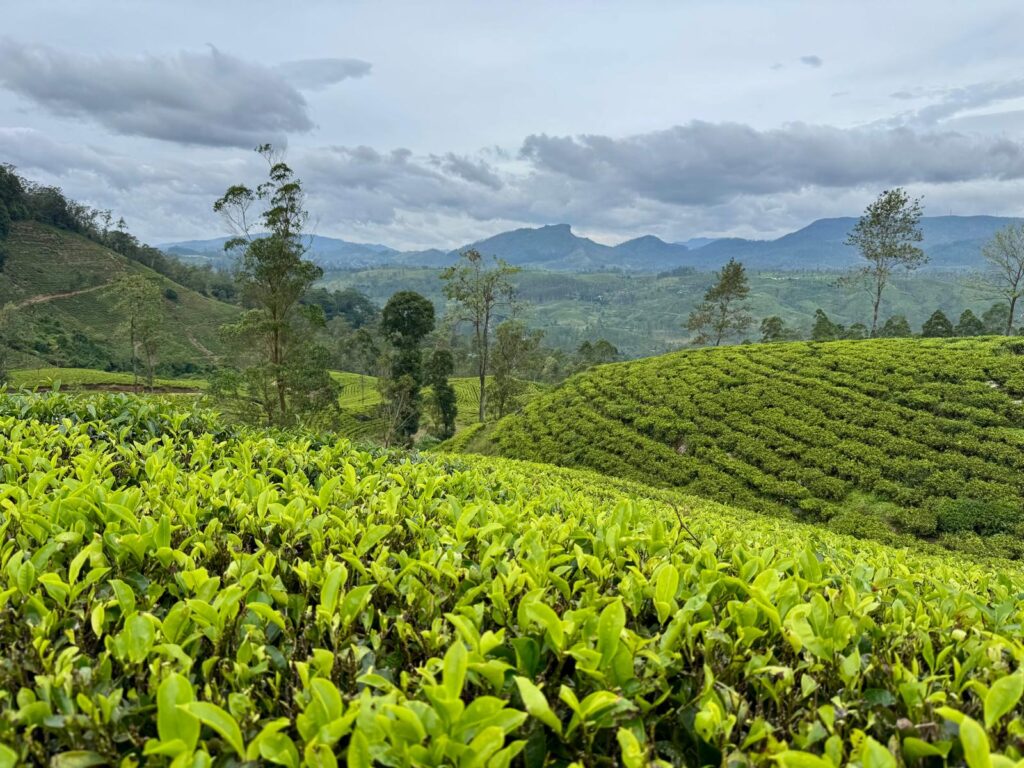
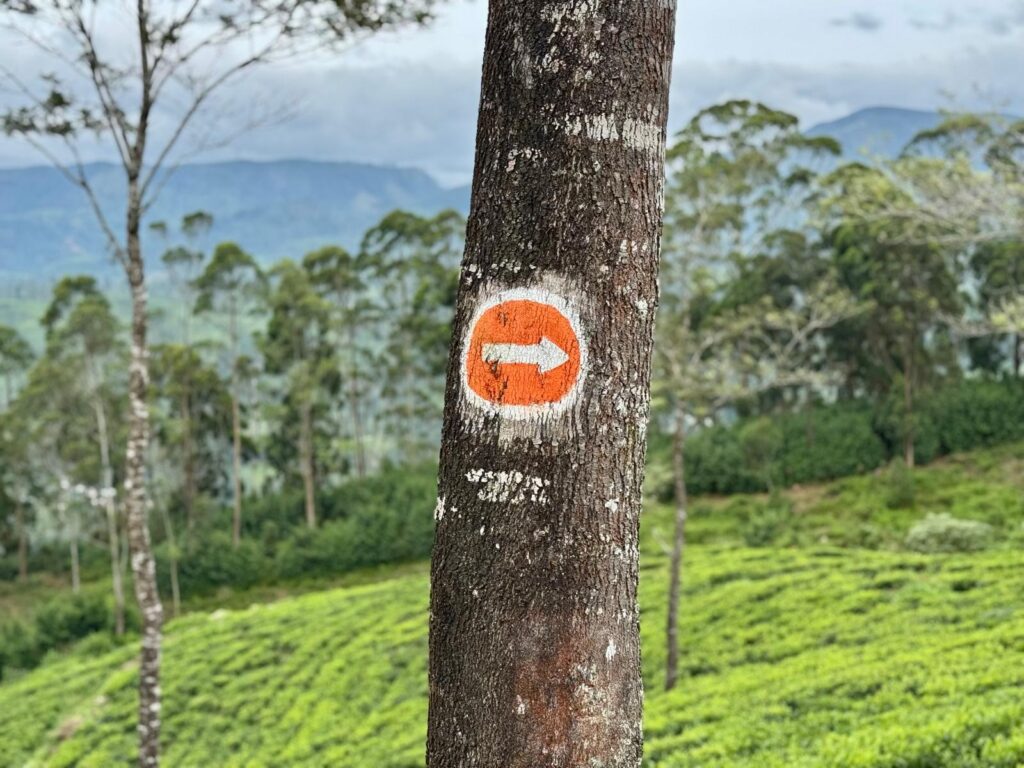

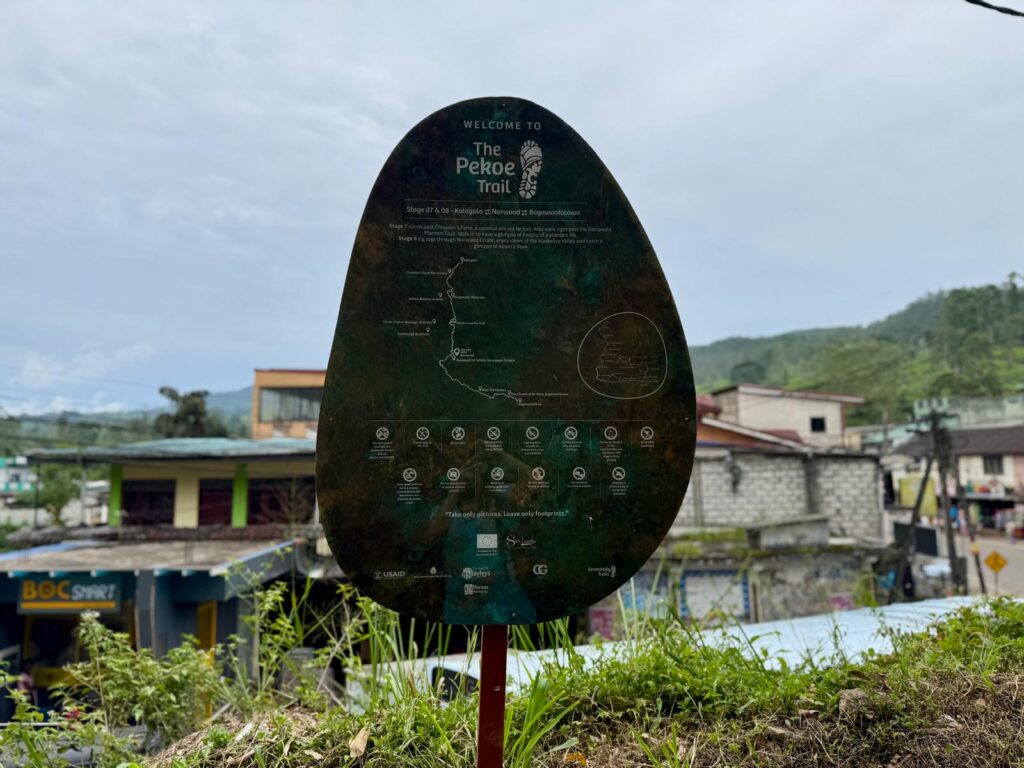
Best Time to Hike the Pekoe Trail
The best time to embark on the Pekoe Trail is during the dry season, which lasts from November to April. During this period, the weather is more predictable, and the trail is relatively easy to navigate. The temperatures range from mild to cool, particularly in the higher elevations, making it an ideal time for hiking. The wet season (May to October) can bring heavy rainfall, so it’s recommended to avoid hiking during this time unless you’re well-prepared for the conditions.
Disclaimer: Nowadays due to climate change, it’s impossible to predict the weather. In 2025 the entire month of January was rainy, a 100% abnormal condition.
Hiking Difficulty & Preparation for the Pekoe Trail
While the Pekoe Trail is manageable for most hikers with a moderate level of fitness, there are some sections that can be challenging due to steep ascents, uneven terrain, and occasional slippery paths, especially after rainfall. The key to completing the trail comfortably lies in proper preparation and pacing.
Fitness Level: The trail is suitable for hikers with a basic level of fitness. Some sections, particularly the climbs, may be strenuous for those who are not used to walking uphill for extended periods. However, there are stages with relatively short distance and moderate pace make it achievable for most people who regularly hike or walk. Besides, in most places, you can cut the hike short and get back to the road to be picked-up by a vehicle if needed.
- Suitable for most hikers with moderate fitness levels.
- Some sections include steep climbs and uneven terrain.
- Daily distances range from 9 to 18 km.
- Sections near Adam’s Peak and Horton Plains require stamina due to elevation changes.
- Train in advance by walking long distances with a loaded backpack.
- Get familiar with high-altitude trekking, as some sections reach over 2,000 meters.
What to Pack for Hiking in Sri Lanka:
- Clothing:
- Lightweight, breathable layers for daytime hiking.
- Long sleeves and pants to protect against insect bites and thorns, particularly if hiking through forested areas.
- Rain gear, such as a waterproof jacket or poncho—even in dry season, the weather can change rapidly.
- Warm clothing for cooler evenings, especially in higher altitudes.
- Quick-dry hiking pants and moisture-wicking shirts.
- Footwear:
- Sturdy hiking shoes with a good grip, as the terrain can be rocky and uneven.
- Socks (preferably moisture-wicking and comfortable for long distances).
- Sandals or lightweight shoes for relaxing in guesthouses.
- Anti-leech socks (you may encounter leeches at some stages, especially after rainfall)
- Hydration & Snacks:
- Water bottles (at least 2 liters per day), as clean drinking water might not always be available on the trail.
- Energy bars, nuts, and dried fruits for snacking between meals.
- Electrolyte tablets for hydration on hot days.
- Thermos for tea lovers to enjoy local Ceylon tea along the way.
- Essential Gear:
- Insect repellent (important to protect against mosquitoes and other insects).
- Sunscreen, even on cloudy days.
- Personal first-aid kit with basic supplies (band-aids, antiseptic wipes, pain relievers).
- Camera for capturing the stunning landscapes along the way.
- Trekking poles for added stability on steep sections.
- GPS or offline maps for navigation.
- Flashlight or headlamp for early morning hikes.
Accommodation & Logistics along the Pekoe Trail
Accommodation along the Pekoe Trail is mostly provided in tea plantation bungalows and guesthouses located at various points on the route. Most of these are basic but comfortable, offering the chance to experience the lifestyle of tea estate workers while enjoying home-cooked meals made with local ingredients.
- Tea Plantation Bungalows: These charming bungalows are scattered throughout the tea plantations and offer a rustic, yet comfortable stay. Many are family-run, and they provide a unique opportunity to experience the local lifestyle.
- Guesthouses in Dalhousie and Nuwara Eliya: If you prefer a more affordable option, guesthouses in Dalhousie and Nuwara Eliya offer comfortable rooms and basic amenities. Staying in these locations also allows you to enjoy local Sri Lankan food.
- Kandy: The start (or finish) destination offers a wide range of hotels, from budget options to luxury resorts.
- Camping: Some sections allow camping, ideal for adventurous hikers.
- Eco-lodges: Sustainable off-grid/luxury stays offering an immersive experience in nature.
For logistics, you can take a taxi, train or bus from Colombo to Hatton or Kandy to start the trail. The return journey can be done by bus, train or taxi from Kandy or Hatton/Nuwara Eliya. Many hikers arrange transport in advance to ensure seamless travel. Finding accommodation and transport on the fly is, to say the least, entertaining.
Tuk-tuk rentals are available for exploring nearby attractions between hikes.
Public buses are cheap and widely available, but schedules can be unpredictable, and there is usually no space for luggage.
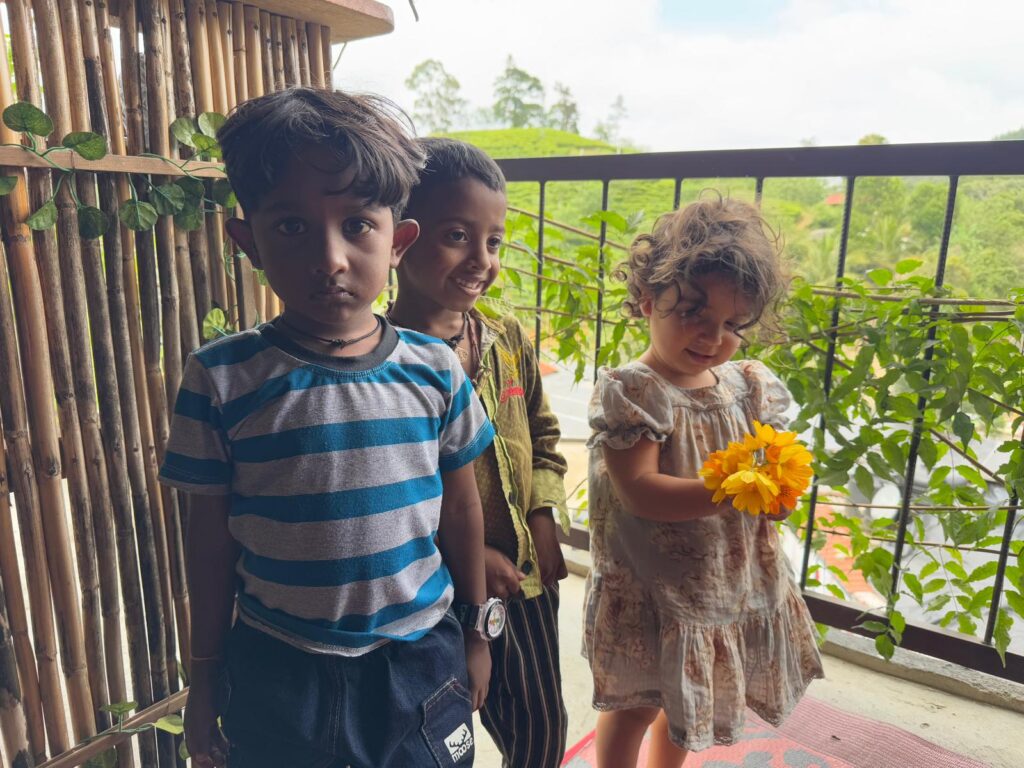

Pekoe Trail Guided Tours & Luggage Transfer Services
For those seeking a hassle-free hiking experience, guided tours are a great option. Only a few select tour operators in Sri Lanka offer guided treks along the Pekoe Trail, providing knowledgeable guides who can share insights into the local history, culture, and natural surroundings. Additionally, luggage transfer services are available for those who prefer not to carry heavy backpacks on the trail. These services transport your luggage from one guesthouse to the next, allowing you to hike with a lighter load.
- Guided Tours: Most tours include transportation to the starting point, a professional local guide, and meals and accommodation along the way. The cost typically ranges from $50 to $150+ per day, depending on the service level. Guided tours often come with added perks such as cultural experiences, tea estate tours, and local food tastings.
- Luggage Transfer Services: While there aren’t many local tour companies that offer these services, it’s possible to arrange in advance, though it may turn out more costly than the guided tour option. Luggage is transferred between guesthouses, so hikers only need to carry a daypack during the hike.
- Self-Guided Option: Maps and GPS apps make navigation easy. At each guesthouse, you might be able to get help with further logistics such as transport, guides or luggage transfer.
- Travel hassle-free with MAHO: Needless to say, we can help you organize anything you need, from single luggage/person transfers to complete tour packages. Our services range from 1:1 consulting to customizing a full package according to your schedule and interests. Get in touch with us today and save yourself the stress of dealing with each and every detail!
Cultural & Wildlife Encounters
The Pekoe Trail offers a chance to encounter both local culture and wildlife. Along the way, you’ll pass through villages where tea workers and farmers live. You’ll likely be invited to taste freshly brewed Ceylon tea and learn about the tea-making process, which has been a staple of Sri Lankan culture for centuries.
In terms of wildlife, the central highlands of Sri Lanka are home to a variety of endemic species. Keep an eye out for the Purple-faced Langur, a species of monkey found only in Sri Lanka, and Sri Lanka’s national bird, the Sri Lanka Junglefowl. The area also boasts a rich diversity of plant life, including rare orchids and ferns.
Witness cultural festivals in towns along the route, especially during Esala Perahera in Kandy.
Safety & Responsible Travel Tips for Hiking the Pekoe Trail Sri Lanka
- Weather Considerations: Always check the weather forecast before your trip. The weather in the hill country can change rapidly, and it’s important to be prepared for sudden rainfall or drops in temperature.
- Start early to avoid midday heat.
- Ethical Travel Practices: Engage with local communities respectfully, and support small-scale businesses such as family-run guesthouses and tea estates. Be mindful of your environmental footprint by avoiding littering and reducing waste. Consider purchasing tea directly from local producers to support their livelihoods. Respect local customs, especially in religious sites.
- Emergency Preparedness: While the trail is generally safe, accidents can happen. Make sure you have a fully charged phone, some local emergency numbers, and access to a first-aid kit. Having a local guide can also add an extra layer of safety, as they are familiar with the terrain and any potential hazards.
- Carry cash, as ATMs are rare in remote areas.
- Book accommodation in advance during peak season (December, January, April, July, August).
- Avoid single-use plastics and support eco-friendly guesthouses.
- Try local food, such as pol roti, kottu, and hoppers for an authentic Sri Lankan experience.
- Take rest days between longer hikes to explore nearby attractions.
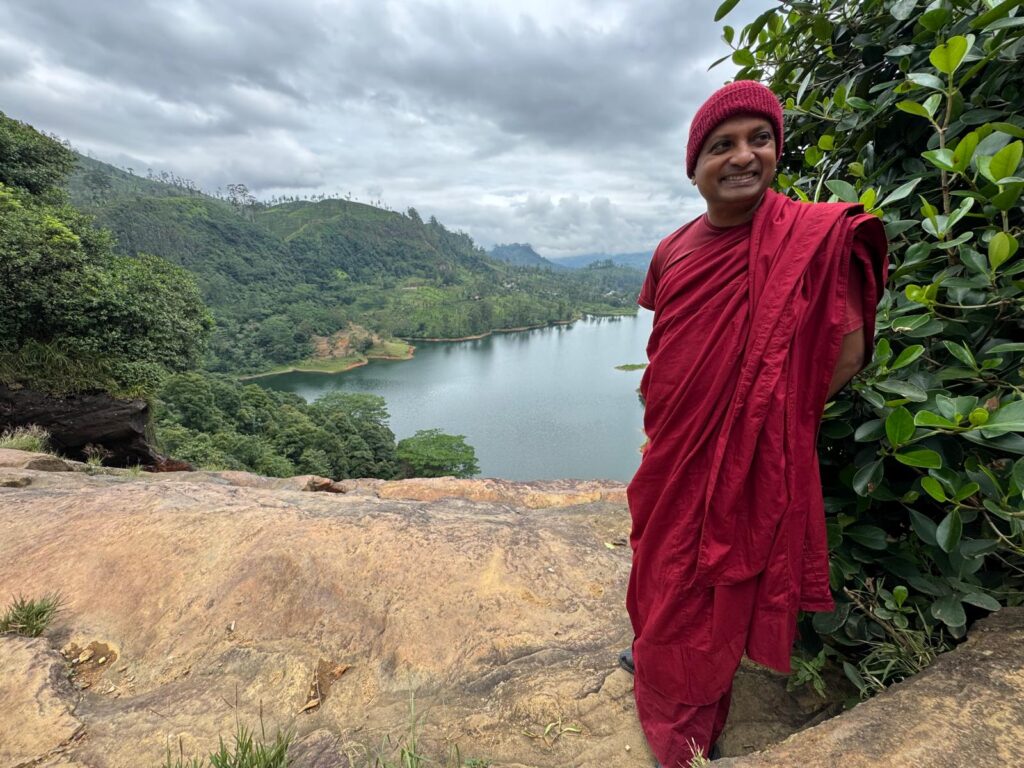
Final Thoughts on Hiking the Pekoe Trail
The Pekoe Trail is an unforgettable journey that combines natural beauty, cultural heritage, and outdoor adventure. Whether you’re looking to immerse yourself in Sri Lanka’s tea culture, explore the lush highlands, or simply disconnect from everyday life, this trail offers something for everyone. With proper preparation, a keen sense of adventure, and a little curiosity, your experience on the Pekoe Trail will undoubtedly be one of the highlights of your Sri Lankan journey.
Contact us today to experience some of the most enjoyable hikes in Sri Lanka!





Hello Maho and Tom,
I have read your article with great interest, and I would like to express my gratitude for introducing the Pekoe Trail in Sri Lanka, which is also recognized as a hidden gem in Asia.
As the proprietor of Tea Flower Adventure, an accommodation provider for hikers undertaking Pekoe Trail Stage-3, I would like to extend a warm welcome to the world to explore this remarkable destination.
You can follow me on WhatsApp at +94774161431. I will be more than happy to hear from you.
All the very best,
GLADWIN